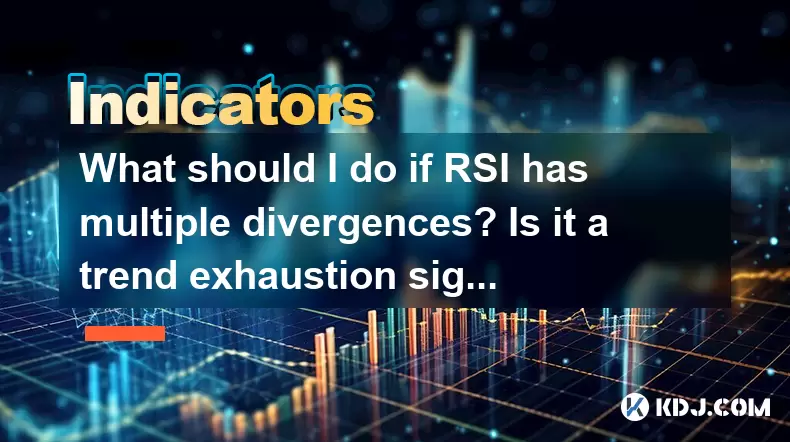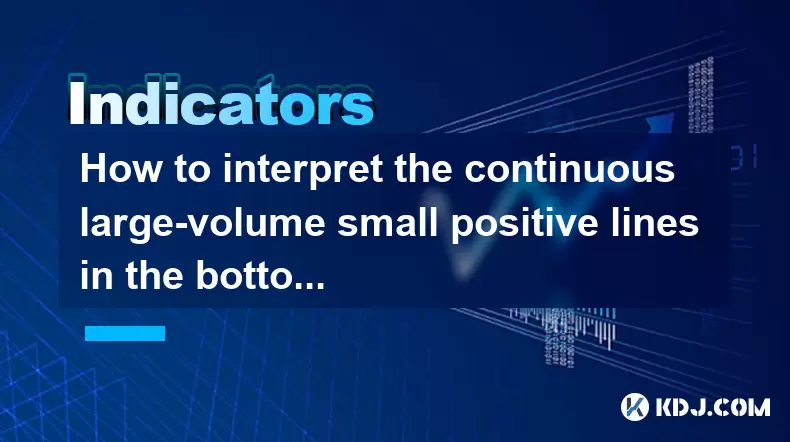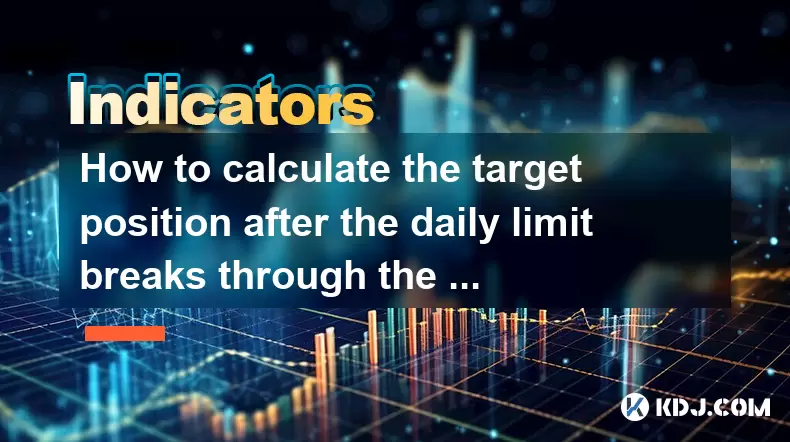-
 Bitcoin
Bitcoin $101,898.5005
-0.75% -
 Ethereum
Ethereum $2,258.1125
-1.07% -
 Tether USDt
Tether USDt $1.0004
0.01% -
 XRP
XRP $2.0178
-2.93% -
 BNB
BNB $624.0243
-1.53% -
 Solana
Solana $134.3298
-0.90% -
 USDC
USDC $0.9999
0.01% -
 TRON
TRON $0.2675
-2.05% -
 Dogecoin
Dogecoin $0.1538
-1.96% -
 Cardano
Cardano $0.5482
-1.11% -
 Hyperliquid
Hyperliquid $35.5636
5.45% -
 Bitcoin Cash
Bitcoin Cash $453.4902
-1.66% -
 Sui
Sui $2.5134
-2.97% -
 UNUS SED LEO
UNUS SED LEO $9.1292
1.77% -
 Chainlink
Chainlink $11.8457
-1.60% -
 Stellar
Stellar $0.2312
-2.73% -
 Avalanche
Avalanche $16.9721
0.29% -
 Toncoin
Toncoin $2.7549
-3.82% -
 Shiba Inu
Shiba Inu $0.0...01081
-1.10% -
 Litecoin
Litecoin $80.8250
-0.71% -
 Hedera
Hedera $0.1374
0.21% -
 Monero
Monero $305.4827
-2.36% -
 Ethena USDe
Ethena USDe $1.0006
0.00% -
 Dai
Dai $1.0000
-0.01% -
 Polkadot
Polkadot $3.2085
-3.12% -
 Bitget Token
Bitget Token $4.0845
-3.13% -
 Uniswap
Uniswap $6.3353
-1.63% -
 Pi
Pi $0.5085
-0.70% -
 Pepe
Pepe $0.0...08913
-3.82% -
 Aave
Aave $232.7090
-0.58%
What should I do if RSI has multiple divergences? Is it a trend exhaustion signal?
Multiple RSI divergences signal trend exhaustion; traders should confirm with other indicators and use risk management strategies when trading on these signals.
May 24, 2025 at 03:35 am

When analyzing the Relative Strength Index (RSI) for potential trading signals, one may encounter a situation where multiple divergences occur. This scenario can be particularly complex, and understanding its implications is crucial for making informed trading decisions. This article will explore what multiple RSI divergences signify, how to identify them, and whether they indicate trend exhaustion.
Understanding RSI and Divergences
The Relative Strength Index (RSI) is a momentum oscillator that measures the speed and change of price movements. It oscillates between 0 and 100 and is typically used to identify overbought or oversold conditions in the market. An RSI value above 70 suggests that an asset may be overbought, while a value below 30 indicates it may be oversold.
Divergence occurs when the price movement of an asset and the RSI indicator do not confirm each other. There are two main types of divergences:
- Bullish Divergence: This happens when the price makes a lower low, but the RSI forms a higher low. It suggests that the selling pressure is weakening and a potential bullish reversal might be on the horizon.
- Bearish Divergence: This occurs when the price reaches a higher high, but the RSI forms a lower high. It indicates that the buying momentum is waning, and a bearish reversal could be imminent.
Identifying Multiple Divergences
Multiple divergences occur when the RSI repeatedly shows divergence from the price over a series of price movements. For example, if the price continues to make higher highs, but the RSI shows several instances of lower highs, this constitutes multiple bearish divergences.
To identify multiple divergences, traders should:
- Monitor the Price and RSI: Observe the price chart alongside the RSI to spot discrepancies between the two.
- Track Multiple Swings: Look for at least two or more instances where the price and RSI diverge. For instance, two or more bearish divergences in an uptrend or two or more bullish divergences in a downtrend.
- Confirm with Other Indicators: Use additional technical indicators, such as moving averages or volume, to validate the divergence signals.
Multiple Divergences as a Trend Exhaustion Signal
Multiple divergences can indeed be a strong indicator of trend exhaustion. When the RSI repeatedly fails to confirm the price action, it suggests that the underlying momentum driving the trend is weakening. This can be a warning sign that the current trend is losing steam and may soon reverse.
For example, in an uptrend, if the price continues to make higher highs but the RSI shows multiple lower highs, it indicates that buyers are struggling to push the price higher with the same vigor. Conversely, in a downtrend, if the price makes lower lows but the RSI shows multiple higher lows, it suggests that sellers are losing their grip, and a reversal might be near.
Trading Strategies Based on Multiple Divergences
When multiple divergences are identified, traders can employ various strategies to capitalize on potential trend reversals:
- Entry Points: Enter a trade in the direction of the expected reversal. For instance, after confirming multiple bearish divergences in an uptrend, consider shorting the asset.
- Stop-Loss Orders: Place stop-loss orders above the recent high in a bearish scenario or below the recent low in a bullish scenario to manage risk.
- Profit Targets: Set profit targets based on key support and resistance levels or use trailing stops to maximize gains as the new trend develops.
Practical Example of Multiple Divergences
Let's consider a practical example to illustrate how multiple divergences might play out:
- Scenario: Bitcoin (BTC) is in an uptrend, making higher highs on the price chart.
- Observation: The RSI shows multiple bearish divergences, with the price making higher highs (e.g., $40,000, $45,000, $50,000) but the RSI forming lower highs (e.g., 75, 70, 65).
- Action: A trader might decide to short BTC near the $50,000 level, placing a stop-loss just above the recent high and setting a profit target at a key support level, such as $40,000.
Validating Multiple Divergences with Other Tools
To increase the reliability of multiple divergence signals, traders often use other technical analysis tools to confirm their observations:
- Moving Averages: Look for crossovers or divergences between the price and moving averages to validate RSI signals.
- Volume Analysis: Check if the trading volume supports the divergence. For instance, declining volume during an uptrend with multiple bearish divergences can reinforce the signal.
- Candlestick Patterns: Identify reversal candlestick patterns, such as doji or engulfing patterns, near the divergence points to further confirm potential trend exhaustion.
Risk Management When Trading Multiple Divergences
Effective risk management is crucial when trading based on multiple divergences:
- Position Sizing: Determine the appropriate size of your trade based on your overall portfolio and risk tolerance.
- Diversification: Avoid putting all your capital into a single trade. Diversify across different assets and strategies to mitigate risk.
- Continuous Monitoring: Keep an eye on the market and be ready to adjust your positions if the situation changes. Multiple divergences are not foolproof, and market conditions can shift unexpectedly.
Frequently Asked Questions
Q: Can multiple divergences occur in both bullish and bearish markets?
Yes, multiple divergences can occur in both bullish and bearish markets. In a bullish market, you might see multiple bearish divergences signaling potential exhaustion of the uptrend. In a bearish market, multiple bullish divergences could indicate that the downtrend is losing momentum.
Q: How long should I wait to confirm multiple divergences before entering a trade?
The timeframe for confirming multiple divergences can vary depending on the asset and market conditions. Generally, it's advisable to wait for at least two clear instances of divergence and to confirm these with other technical indicators before entering a trade. This helps to increase the reliability of the signal.
Q: Are multiple divergences more reliable than single divergences?
Multiple divergences are generally considered more reliable than single divergences because they indicate a more sustained weakening of the trend's momentum. However, no signal is infallible, and traders should always use additional tools and risk management strategies to validate and manage their trades.
Q: Can multiple divergences be used for day trading or are they more suited for longer-term trading?
Multiple divergences can be used for both day trading and longer-term trading, depending on the timeframe of the chart you are analyzing. For day trading, you might look at shorter timeframes like 15-minute or 1-hour charts. For longer-term trading, daily or weekly charts could be more appropriate. The key is to ensure that the timeframe aligns with your trading strategy and risk tolerance.
Disclaimer:info@kdj.com
The information provided is not trading advice. kdj.com does not assume any responsibility for any investments made based on the information provided in this article. Cryptocurrencies are highly volatile and it is highly recommended that you invest with caution after thorough research!
If you believe that the content used on this website infringes your copyright, please contact us immediately (info@kdj.com) and we will delete it promptly.
- XRP Rally Meets Neo Pepe Presale: A Meme Coin Revolution?
- 2025-06-23 17:05:13
- Coin-Op Comeback: Arcade Bars, Stern, and a Director's New Venture
- 2025-06-23 16:45:12
- XRP in Japan: From Community Day Tacos to Payment Sector Transformation
- 2025-06-23 17:05:13
- LILPEPE Presale Frenzy: The Meme Coin Revolution is Here, Ya'll!
- 2025-06-23 16:45:12
- Bitcoin Crash Incoming? Kiyosaki Bets Big on Silver Amidst Global Uncertainty
- 2025-06-23 17:25:11
- Dogecoin, Meme Coins, Price Prediction: Riding the Bullish Wave?
- 2025-06-23 17:25:11
Related knowledge

Is the high opening and low closing and huge volume the next day a trap for more?
Jun 23,2025 at 05:07pm
Understanding High Opening and Low Closing with Huge VolumeWhen traders observe a high opening followed by a low closing and massive volume the next day, it often raises concerns about whether this is a trap set by larger players in the market. This pattern typically indicates strong volatility within a short period, which can confuse retail investors. ...

How to interpret the MACD's second golden cross on the water but insufficient volume?
Jun 23,2025 at 05:01pm
Understanding the MACD Indicator and Its SignificanceThe Moving Average Convergence Divergence (MACD) is a widely used technical analysis tool in cryptocurrency trading. It helps traders identify potential buy or sell signals by showing the relationship between two moving averages of an asset’s price. The MACD line, signal line, and histogram are the th...

How much volume is required for the W-bottom to break through the neckline of the time-sharing chart?
Jun 23,2025 at 04:21pm
Understanding the W-Bottom Pattern in Cryptocurrency TradingThe W-bottom pattern is a popular technical analysis formation used by traders to identify potential bullish reversals. It typically appears at the end of a downtrend and resembles the letter 'W' on price charts. In the context of cryptocurrency trading, where volatility is high and trends shif...

How to interpret the continuous large-volume small positive lines in the bottom area?
Jun 23,2025 at 04:43pm
Understanding the Basics of 'Large-Volume Small Positive Lines'In technical analysis, especially within the cryptocurrency market, the pattern known as 'large-volume small positive lines' refers to a scenario where the price increases slightly (small positive candlestick) but is accompanied by unusually high trading volume. This phenomenon typically occ...

How to read the sideways consolidation after the bottom volume and long positive line?
Jun 23,2025 at 02:28pm
Understanding the Sideways ConsolidationWhen analyzing cryptocurrency charts, sidewards consolidation refers to a phase where prices move within a narrow range without a clear upward or downward trend. This pattern often appears after significant price movements, such as a sharp increase followed by a period of equilibrium between buyers and sellers. In...

How to calculate the target position after the daily limit breaks through the previous high?
Jun 23,2025 at 02:57pm
Understanding the Daily Limit BreakthroughIn cryptocurrency trading, a daily limit typically refers to the maximum price movement allowed within a single trading day on certain exchanges. When this limit is breached, especially when it surpasses the previous high, traders often seek to calculate the target position or expected price movement following s...

Is the high opening and low closing and huge volume the next day a trap for more?
Jun 23,2025 at 05:07pm
Understanding High Opening and Low Closing with Huge VolumeWhen traders observe a high opening followed by a low closing and massive volume the next day, it often raises concerns about whether this is a trap set by larger players in the market. This pattern typically indicates strong volatility within a short period, which can confuse retail investors. ...

How to interpret the MACD's second golden cross on the water but insufficient volume?
Jun 23,2025 at 05:01pm
Understanding the MACD Indicator and Its SignificanceThe Moving Average Convergence Divergence (MACD) is a widely used technical analysis tool in cryptocurrency trading. It helps traders identify potential buy or sell signals by showing the relationship between two moving averages of an asset’s price. The MACD line, signal line, and histogram are the th...

How much volume is required for the W-bottom to break through the neckline of the time-sharing chart?
Jun 23,2025 at 04:21pm
Understanding the W-Bottom Pattern in Cryptocurrency TradingThe W-bottom pattern is a popular technical analysis formation used by traders to identify potential bullish reversals. It typically appears at the end of a downtrend and resembles the letter 'W' on price charts. In the context of cryptocurrency trading, where volatility is high and trends shif...

How to interpret the continuous large-volume small positive lines in the bottom area?
Jun 23,2025 at 04:43pm
Understanding the Basics of 'Large-Volume Small Positive Lines'In technical analysis, especially within the cryptocurrency market, the pattern known as 'large-volume small positive lines' refers to a scenario where the price increases slightly (small positive candlestick) but is accompanied by unusually high trading volume. This phenomenon typically occ...

How to read the sideways consolidation after the bottom volume and long positive line?
Jun 23,2025 at 02:28pm
Understanding the Sideways ConsolidationWhen analyzing cryptocurrency charts, sidewards consolidation refers to a phase where prices move within a narrow range without a clear upward or downward trend. This pattern often appears after significant price movements, such as a sharp increase followed by a period of equilibrium between buyers and sellers. In...

How to calculate the target position after the daily limit breaks through the previous high?
Jun 23,2025 at 02:57pm
Understanding the Daily Limit BreakthroughIn cryptocurrency trading, a daily limit typically refers to the maximum price movement allowed within a single trading day on certain exchanges. When this limit is breached, especially when it surpasses the previous high, traders often seek to calculate the target position or expected price movement following s...
See all articles
























































































